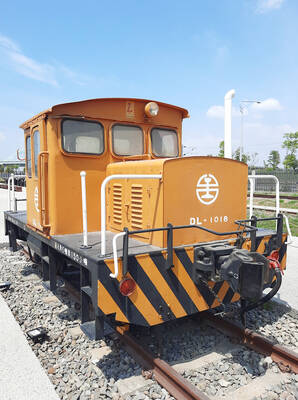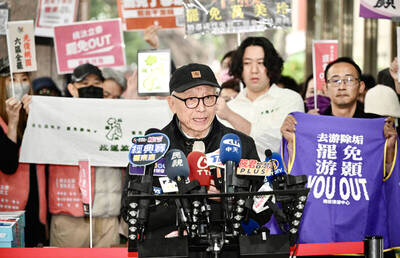There is a tone to Chinese official propaganda that is worthy of Professor Pangloss and his irrefutable case that “all is for the best in the best of all possible worlds.” Beijing’s favoured phrases, such as “win-win cooperation” and “community of common destiny for all mankind,” are designed to evoke an image of China as the fountainhead of conflict-free benevolence. A similar if much more sophisticated feeling runs through Keyu Jin’s (金刻羽) book.
Jin teaches economics at the London School of Economics. She is the Harvard-educated daughter of a former deputy minister of finance who now heads up China’s first multilateral development bank, the Asian Infrastructure Investment Bank. As such, she is well placed to compare key features of western and Chinese economic systems, as she does to good effect in this volume. She is perhaps less well placed — or less eager — to deal with politically contentious questions.
It is not that Jin ignores them. Rather, she displays a disconcerting lack of engagement and a tendency to omit unwelcome information. She acknowledges that there are issues that are likely to concern her readers, but also implies that they are rather beside the point. What matters for economists such as herself, she explains, are numbers and evidence. If either is lacking — on the question of recent events in Xinjiang, for instance — the topic cannot usefully be addressed.

This can produce a curious result. Jin’s book is cogently written, full of insights and rich in well-chosen anecdotes. But it also feels like a landscape peppered with concealed rabbit holes: the reader strolls happily across it, only to suddenly step into an empty space.
Take, for example, a reference to the many children who died in the Sichuan earthquake in 2008. The artist Ai Weiwei (艾未未), at the time not yet exiled from his homeland, was beaten up when he went to investigate and later mounted a moving exhibition of children’s backpacks. Jin’s reference to the child deaths occurs in a passage on the tendency of Chinese households to save.
She argues that when Chinese families were large, older generations felt less need to save because their children would take care of them in old age; with the one child policy, couples saved more. So far, so logical. Then she adds that “greater risks and uncertainty also provide incentives to save,” citing the earthquake deaths of the Sichuan children “in flimsily built schools.” The message seems to be that it is prudent to save harder because your only child might die and not be around in your old age.
Not mentioned is the corruption that built flimsy schools: tellingly, the party headquarters did not collapse. When the bereaved parents demanded accountability for their dead children, they were brutally suppressed.
Elsewhere, Jin refers to a drop in grain production between 1959 and 1961, without mentioning that harvests collapsed because of government policy, and between 30 and 50 million citizens starved to death as a direct result. This omission is the more surprising since she insists that accountability is the key to the legitimacy that she argues the Chinese Communist party enjoys. The real cause of that mass starvation is still not officially acknowledged.
The author also praises China’s COVID policies, which, she writes, were readily accepted — even embraced — by the population, despite ample evidence of protests in Shanghai and other areas against the many abuses of the system. Within three weeks of the first appearance of COVID-19 in Wuhan, she writes, the government had moved swiftly and effectively to protect the population. That is an assertion that might surprise the many scientists and WHO officials who have been unable to verify with certainty either the date or place of the first cases because of destroyed records and official obstruction. Even more recently, the spike in deaths that followed the abrupt reversal of the policy in December last year is being scrubbed from the record.
We learn that Chinese social media carries lively discussions on many topics that, she believes, would surprise western critics of China who take too narrow a view of life under the CCP. No doubt many westerners do lack subtlety and nuance in their perceptions of the country, but the study she cites in evidence was carried out between 2009 and 2013, a time of far greater freedoms and livelier debate on all fronts than exists under current conditions.
Today, according to China Digital Times, which tracks Chinese censorship, previously tolerated topics are censored.
“Financial news, once considered a relatively safe topic for public discussion, has been repeatedly censored amid a potential recession. Youth unemployment figures have been sporadically censored… Other recent targets of censorship include cremation statistics (which hint at COVID’s true death toll), reports on [the Chinese crime of] ‘picking quarrels and provoking trouble,’ health and science blogs, and even Alibaba listings of toys that were a tongue-in-cheek reference to a recent instance of official mendacity.”
As an economist, Jin is aware of the current debate between analysts who argue that China has peaked and may stagnate, and those who take a more optimistic view. Both agree that the era of rapid growth is over and the middle-income trap is threatened. They differ in their assessment of the system’s capacity to deal with it.
Jin is an optimist: while she acknowledges the well-rehearsed challenges — a ropey financial sector, huge internal debt, collapsing property market and an ageing population — she believes Beijing has a unique and still evolving model that will allow China to grow through these difficulties. In her account of the previous phases of Chinese growth she rightly points to the role of ambitious local politicians in fostering new companies and industries. Whether she is right to extrapolate from that experience that today’s leaders can address the country’s contemporary issues in the same pragmatic, incremental and ultimately successful manner, remains contested. Those who disagree point to endemic corruption, increased repression and stalled total factor productivity as obstacles yet to be effectively tackled.

The Democratic Progressive Party (DPP), Chinese Nationalist Party (KMT), and the country’s other political groups dare not offend religious groups, says Chen Lih-ming (陳立民), founder of the Taiwan Anti-Religion Alliance (台灣反宗教者聯盟). “It’s the same in other democracies, of course, but because political struggles in Taiwan are extraordinarily fierce, you’ll see candidates visiting several temples each day ahead of elections. That adds impetus to religion here,” says the retired college lecturer. In Japan’s most recent election, the Liberal Democratic Party lost many votes because of its ties to the Unification Church (“the Moonies”). Chen contrasts the progress made by anti-religion movements in

Taiwan doesn’t have a lot of railways, but its network has plenty of history. The government-owned entity that last year became the Taiwan Railway Corp (TRC) has been operating trains since 1891. During the 1895-1945 period of Japanese rule, the colonial government made huge investments in rail infrastructure. The northern port city of Keelung was connected to Kaohsiung in the south. New lines appeared in Pingtung, Yilan and the Hualien-Taitung region. Railway enthusiasts exploring Taiwan will find plenty to amuse themselves. Taipei will soon gain its second rail-themed museum. Elsewhere there’s a number of endearing branch lines and rolling-stock collections, some

This was not supposed to be an election year. The local media is billing it as the “2025 great recall era” (2025大罷免時代) or the “2025 great recall wave” (2025大罷免潮), with many now just shortening it to “great recall.” As of this writing the number of campaigns that have submitted the requisite one percent of eligible voters signatures in legislative districts is 51 — 35 targeting Chinese Nationalist Party (KMT) caucus lawmakers and 16 targeting Democratic Progressive Party (DPP) lawmakers. The pan-green side has more as they started earlier. Many recall campaigns are billing themselves as “Winter Bluebirds” after the “Bluebird Action”

Last week the State Department made several small changes to its Web information on Taiwan. First, it removed a statement saying that the US “does not support Taiwan independence.” The current statement now reads: “We oppose any unilateral changes to the status quo from either side. We expect cross-strait differences to be resolved by peaceful means, free from coercion, in a manner acceptable to the people on both sides of the Strait.” In 2022 the administration of Joe Biden also removed that verbiage, but after a month of pressure from the People’s Republic of China (PRC), reinstated it. The American